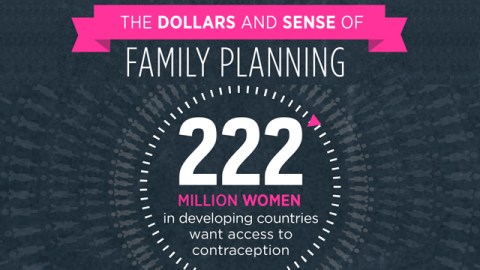A Woman’s Worth

by Suzanne Ehlers, for Population Action International
A walk to her local clinic may take several hours. She may have to wait in line. She may have to go back several times before she can get the method she needs. She may even get pushback from others in her family, in her neighborhood. But she goes.
She goes because she knows what is on the other side of that trip. The promise of the pills, or the shot, or the implant.
She goes because she knows when she leaves, she will feel a little lighter, a little more at ease. She goes because the trip means when her boyfriend or husband approaches her, she no longer has to worry about getting pregnant. It means she can stay in school. It means she can work on a growing business. It means she can concentrate on taking care of her kids.
In short, it’s worth it.
Helping women gain access to the family planning they want takes commitment: it involves more health clinics, skilled providers, and a range of quality contraceptive methods to choose from.
When even one woman is able to access family planning, it transforms her life.
But we have a bigger problem on our hands. There’s not just one woman, or 10, or 1,000. There’s already 222 million women who want to access contraception, but can’t.
The United Nations Population Division announced today that the world population is expected to increase to 9.6 billion by 2050. This represents an increase of 300 million people from the 2010 revision. The increase is due to changes in estimates of current fertility in some developing countries, and their impact on future fertility. Future projections still assume falling fertility in many developing countries, which will not happen without better access to family planning.
Our growing population represents not only a challenge, but a big opportunity for more and more women to take charge of their lives. Helping women gain access to the family planning they want takes commitment: it involves more health clinics, skilled providers, and a range of quality contraceptive methods to choose from.
The Guttmacher Institute estimates it would take $8.1 billion per year to fill this gap, and meet women’s needs. Of that, the U.S. share is $1 billion.
That may sound like a lot, but consider some of the other things our government spends $1 billion on: advertising, maintenance of empty buildings, subsidies for Amtrak. In fact, the U.S. government spends $1 billion every 2.5 hours.
When you think about what you’re buying, family planning is a bargain.
Putting $1 billion toward family planning would mean a woman’s trip to the clinic might be shorter, her chances of finding contraception in stock better, her choice of methods broader. It would be an investment toward 222 million opportunities for staying in school, for new careers, for healthy children with more secure futures.
Think about what the world would look like—what each woman’s life would look like—if we put in our fair share.
I’m confident you’ll agree: She’s worth it.





